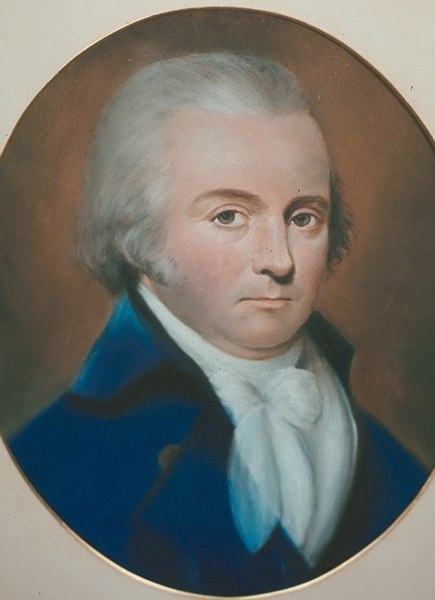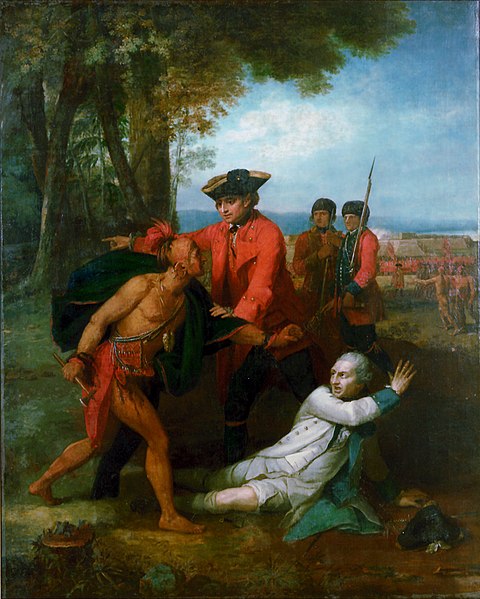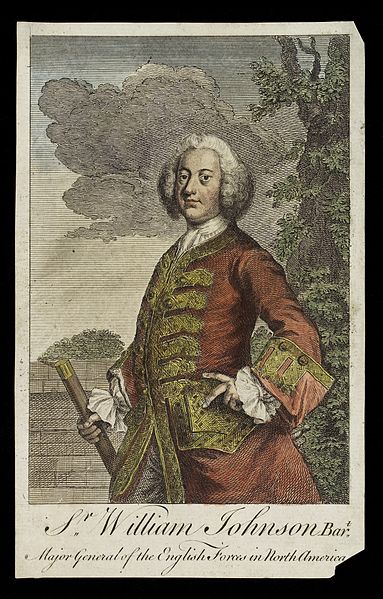Sir John Johnson, 2nd Baronet
Brigadier-General Sir John Johnson, 2nd Baronet was an American-born military officer, magistrate, landowner in the British Indian Department who fought as a Loyalist during the American Revolutionary War. He was the son of Sir William Johnson, 1st Baronet, who was the first British Superintendent of Indian Affairs. He inherited his father's baronetcy and estate in 1774.
A portrait of Johnson in 1792
William Johnson hosting an Iroquois conference at Johnson Hall in 1772 (painting by E. L. Henry, 1903)
Johnson Hall 2006
Private, Johnson's Royal Regiment of New York, 1776, by Charles M. Lefferts.
British Indian Department
The Indian Department was established in 1755 to oversee relations between the British Empire and the First Nations of North America. The imperial government ceded control of the Indian Department to the Province of Canada in 1860, thus setting the stage for the development of the present-day Department of Crown–Indigenous Relations and Northern Affairs Canada.
Sir William Johnson at the Battle of Lake George (1755)
Guy Johnson, superintendent of the Northern Department, 1774-1782
Joseph Brant, a leading force in the Department from the era of the American Revolution until his death in 1807
Superintendent General William Johnson (c. 1715-1774)








